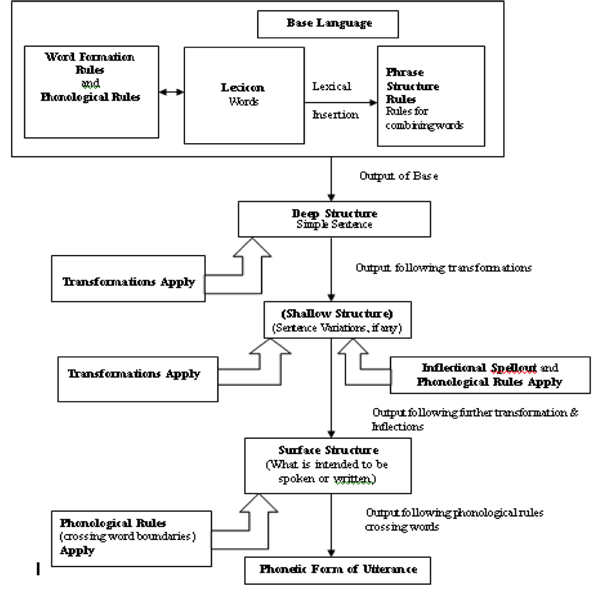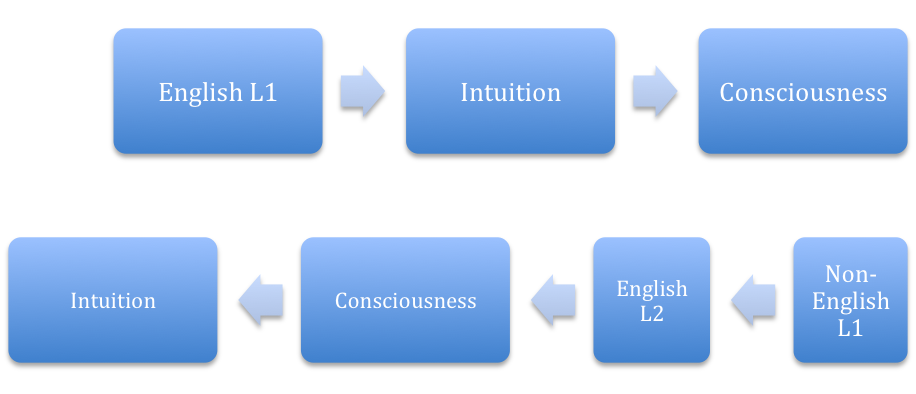|
Issues in Teaching Grammar to ESL/EFL Students
Defining Pedagogical Grammar Pedagogical grammar is best explained by distinguishing it from theoretical grammar. Theoretical grammar is concerned with creating a description of language as a system. It is concerned with describing language in general as well as with describing particular languages, such as English, in a systematic way. Two common approaches from the twentieth century are structural linguistics and transformational-generative (T-G) grammar. Fig. 1, based on A. J. Bickford (1998, p. 248), provides one example of such a description for language in general.
Fig. 1 Bickford’s view of T-G Grammar T-G Grammar posits that what is in one’s head are sounds, morphemes, and rules. Sounds form morphemes, morphemes form words, words form phrases, phrases form clauses and sentences. Insertion rules and transformational rules allow for the creative nature of language. When presented with such a description, many people will respond with something like this, “I can hardly understand that, why on earth would I need that to teach English to a newly arrived Bhutanese refugee who is 10 years old?” And the immediate answer is you don’t; that’s why in this course we are going to look at grammar from a pedagogical viewpoint rather than a theoretical one. We will, however, need to range into the theoretical level from time to time. And then ongoing protestations against studying grammar continue along these lines (because most Americans really do hate to study grammar), “Okay, but I’m a native speaker; I can tell if my students use English right or not. Why should I study it?” And part of the answer to that question is that the job of an ESL teacher is to help non-native speakers learn English. Therefore, what the students know, how the students perceive English, and the processes through which they learn English are more important than how the teacher perceives the language. While very young learners may learn through the development of intuition before the development of conscious understanding of the language, older learners likely will seek conscious understandings first. Essentially, they approach English from a different direction than a native speaker does, as Fig. 2 illustrates.
Some might still claim at this point that understanding a learner may be coming to the subject matter from a different origin is essential, but that the conscious knowledge of all the details of English are still unnecessary. Why should a native speaker try to transfer all the intuitive knowledge to conscious knowledge? To this I reply that native speaker intuition allows for judgments on the grammaticality of utterances, but a native speaker can only make judgments on standardness with conscious metalinguistic knowledge of the language. Since standardness is part of the academic content that teachers are responsible for, teachers need more than native speaker intuition in order to teach the content they are responsible for. |

